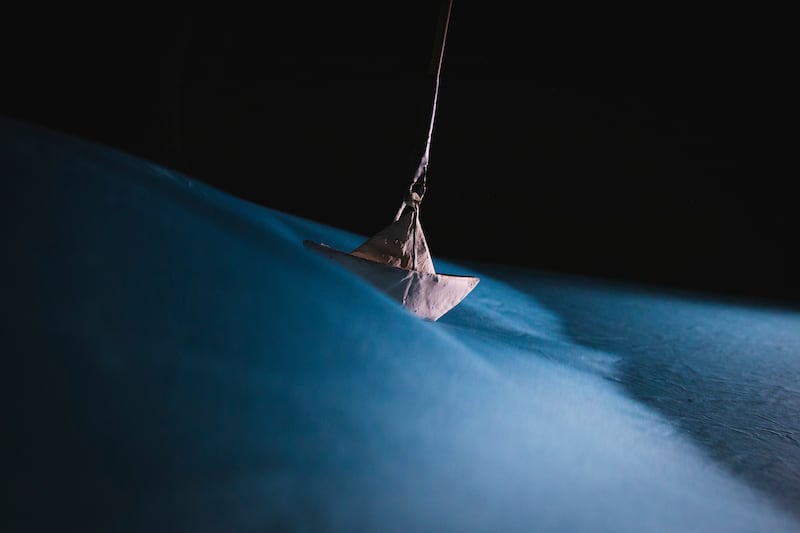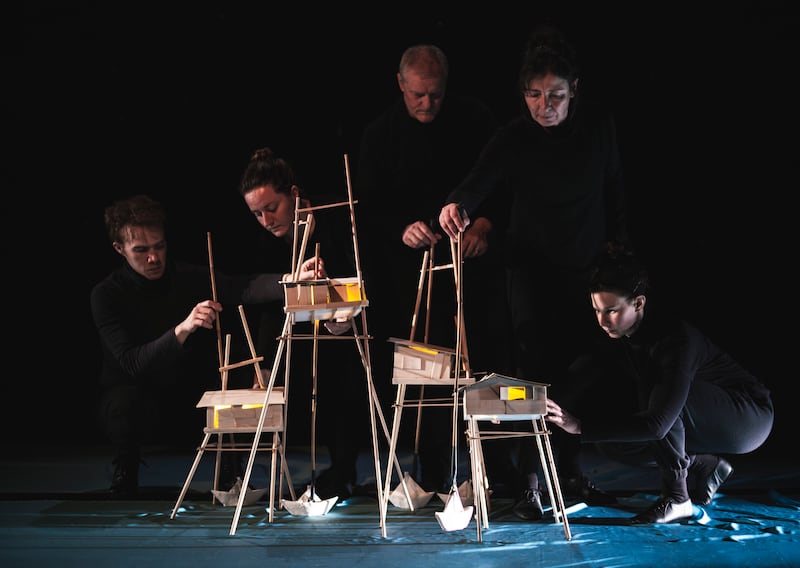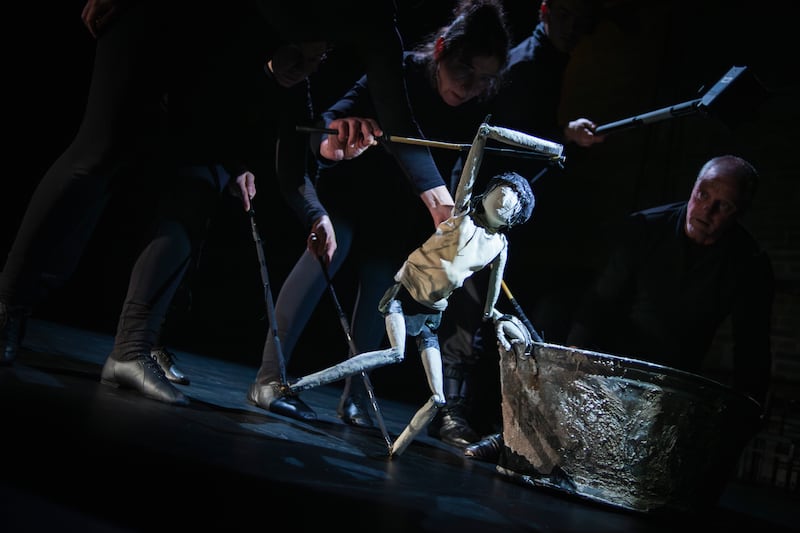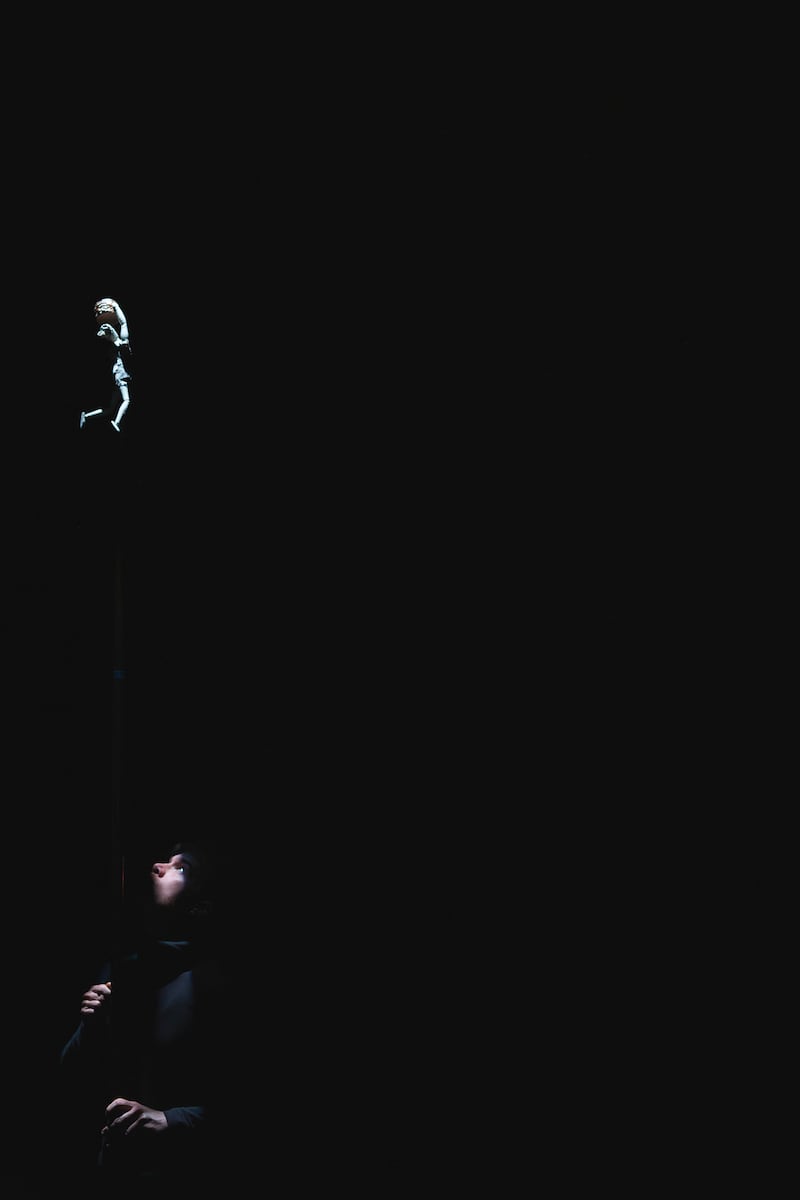The Last Pearl
Space Upstairs, Project Arts Centre, Dublin
★★★★☆
For audiences who have previously gone on a journey with Blue Raincoat, the most obvious question about The Last Pearl, its latest play about an odyssey, might be: who is it about? Since The Strange Voyage of Donald Crowhurst, in 2003, the company has taken its feet off dry land time and again, telling the stories of Yuri Gagarin (The First Cosmonaut), Ernest Shackleton (Shackleton) and other explorers from the British Antarctic Expedition (Hunting Darwin).
In an intriguing departure, director Niall Henry and company have decided to make a play about a fictional explorer – a deep-sea diver, hunting for pearls. Unlike those fascinations with 20th-century exploration, the landscape is this time eerily resonant with contemporary concerns: from shadowy edges of the stage, the cast are first seen sending gentle ripples along a long stretch of sea-blue fabric, before building a more incessant procession of ocean waves, to cracks of thunder. A storm is coming.
Through delicately absorbing movements, five performers – Sandra O’ Malley, Aisling Mannion, Áine Ní Laoghaire, Brian Devaney and John Carty – manipulate miniature puppets in short, illuminating vignettes that flow sequentially, like the panels of a storyboard: a scene like a cinematic wide shot depicts a flotilla of sailing boats on the open water, then cedes to reveal a village of stilt houses on the shore. References both architectural and meteorological – there is mention of a typhoon in the play’s description – lean towards the Indo-Pacific, but, in our era of climate crisis, the threat of environmental catastrophe can be felt anywhere.

We see the powerful diver make her deep-sea descents, reaching the ocean floor and gliding along human refuse: sunken rubbish; broken machinery and equipment. That may suggest the thrills of an adventure far from dry land, but, affectionately, Henry also allows us an intimate view into her world, returning us to her home each night and revealing her passions for coastal community, as well as her pregnancy.
‘There are times I regret having kids. They’re adults, and it’s now that I’m regretting it, which seems strange’
Cillian Murphy: ‘You had the Kerry babies, the moving statues, no abortion, no divorce. It was like the dark ages’
The Dublin couple who built their house in a week
John Creedon: ‘I was always being sent away, not because they didn’t love me, but because they couldn’t cope’
What feels significant is that closeness; since the elegant Shackleton, in 2016, Blue Raincoat has undertaken a journey into wordless puppet-theatre plays. (Its displays feel even more miraculous this time around. Special credit to Barry McKinney, whose lighting design somehow, during a scene where a typhoon devastates the village, manages to make flowing fabric resemble a surge of ocean waves.) A sense of individuality has often been more difficult to achieve.

When the disaster leaves the diver as the sole survivor, it would be easy to expect the story to become about the grief of someone who lost their community. Instead, to the fast guitar strums of Joe Hunt’s evocative music, her boat is seen pushing against the waves, while underwater scenes show her retrieving the symbols of her people. A culture must continue.
That makes her Blue Raincoat’s most intriguing explorer. As we watch her lay treasures along the sea floor, to lie in wait for her child’s generation to discover, there is something hopeful about this vision of a postdisaster world. Human curiosity is going nowhere.
The Last Pearl, staged by Blue Raincoat, is at Project Arts Centre, Dublin, until Saturday, May 11th; it is touring to the Tron Theatre, Glasgow, from May 30th to June 1st and the Traverse Theatre, Edinburgh, from June 6th to June 8th






